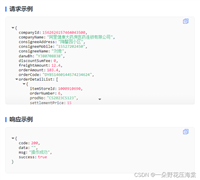什么是keep-alive
“keep-alive” 是 vue.js 中的一个特殊组件,用于缓存组件的状态,以提高应用性能。
在 vue.js 中,组件通常是动态创建和销毁的,当切换到另一个页面或组件时,之前的组件会被销毁,再次进入时会重新创建和初始化。
这样可能导致组件的状态丢失,需要重新初始化,增加了资源的消耗。
组件解决了这个问题,它可以将组件缓存起来,而不是销毁,使得组件在再次进入时保持之前的状态,以及避免重复的创建和初始化过程。
这样可以大幅度提高组件的加载速度和性能。
keep-alive的作用
<keep-alive> 的作用是在 vue.js 应用中缓存组件的状态,以提高应用性能和用户体验。
它可以将组件暂时保存在内存中,而不是每次都重新创建和初始化组件。
主要的作用有以下几点:
- 组件状态保持:通过使用
<keep-alive>,在组件被切换时,其状态会被保留。这意味着组件内部的数据、状态以及一些计算结果都会被缓存,不会因为组件的销毁而丢失。当再次进入该组件时,它会恢复到之前的状态,而不需要重新初始化。这对于用户在不同页面或组件间切换时提供了更流畅的体验。 - 减少资源消耗:如果没有使用
<keep-alive>,每次切换到一个组件时,都需要重新创建和初始化组件。对于复杂的组件,这可能会导致不必要的资源消耗,例如重新加载数据、执行复杂的计算等。而使用<keep-alive>,组件被缓存起来,下次再次进入时直接从缓存中恢复,避免了重复的初始化过程,大大减少了资源消耗。 - 优化性能:由于避免了重复的创建和初始化过程,使用
<keep-alive>可以显著提高组件的加载速度,加快页面响应时间,从而提供更好的用户体验。
需要注意的是,<keep-alive> 并不是适用于所有组件的,特别是对于一些动态变化的组件,如果希望每次进入时都重新初始化,或者希望释放组件占用的资源,就不应该使用 <keep-alive>。
要使用 <keep-alive>,只需将需要缓存的组件包裹在 <keep-alive> 标签中即可,vue.js 会自动管理缓存和组件的生命周期。这是一个简单但强大的功能,可在合适的场景下大幅度提升应用性能。
原理
<keep-alive> 的原理主要涉及两个方面:组件缓存和生命周期的管理。
组件缓存
- 当一个组件被包裹在 <keep-alive> 标签中时,vue.js 会将该组件的实例缓存起来,而不是销毁它。
- 组件的缓存是通过一个名为 cache 的对象来管理的,该对象会保存被缓存的组件实例。
- 当切换到一个被缓存的组件时,vue.js 首先检查 cache 对象中是否已经有该组件的缓存实例。如果有,就直接从缓存中取出该实例;如果没有,就创建一个新的组件实例并将其缓存起来。
生命周期的管理
- 在切换到一个被缓存的组件时,组件的生命周期钩子函数并不会被触发,而是会触发 <keep-alive> 自己的生命周期钩子函数。
- <keep-alive> 组件有两个主要的生命周期钩子函数:created 和 destroyed。
- 在组件第一次被缓存时,created 钩子函数会被触发,表示 <keep-alive> 组件已经创建,此时会创建被缓存组件的实例并将其缓存起来。
- 在切换到其他组件时,destroyed 钩子函数会被触发,表示 <keep-alive> 组件将被销毁,此时会销毁所有缓存的组件实例。
需要注意的是,被包裹在 <keep-alive> 标签中的组件,必须具有唯一的标识,否则会导致缓存冲突。
默认情况下,vue.js 使用组件的名称作为缓存的标识,但也可以通过 key 属性来指定唯一的标识。
使用 <keep-alive> 时,要注意以下几点:
- 不是所有组件都适合使用 <keep-alive>,对于一些动态变化的组件,或者需要每次进入时重新初始化的组件,应该避免使用 <keep-alive>。
- 缓存的组件仍然会触发 activated 和 deactivated 生命周期钩子函数,可以在这两个钩子函数中处理一些特定的逻辑。
- 如果被缓存的组件包含了一些依赖于外部状态(如路由参数、vuex 状态等)的逻辑,需要特别注意在重新进入组件时是否需要重新更新这些状态。
总的来说,<keep-alive> 提供了一种简单且强大的机制来优化 vue.js 应用的性能,特别是在频繁切换组件的场景下。
使用
当您使用 <keep-alive> 组件时,通常需要将需要缓存的组件包裹在 <keep-alive> 标签中,并为每个被缓存的组件设置一个唯一的 key 属性,以确保缓存的正确性。
下面是一个使用 <keep-alive> 组件的示例:
假设我们有两个组件,一个是用于显示用户信息的组件 <userprofile>,另一个是用于显示用户订单信息的组件 <userorders>。
我们希望在用户切换到 <userprofile> 组件时,保持该组件的状态,并且在用户切换到 <userorders> 组件后再切换回来时,不重新初始化 <userprofile> 组件。
<template>
<div>
<keep-alive>
<!-- 使用 key 属性确保组件的正确缓存 -->
<component :is="currentcomponent" :key="currentcomponent" />
</keep-alive>
<button @click="showuserprofile">show user profile</button>
<button @click="showuserorders">show user orders</button>
</div>
</template>
<script>
import userprofile from './userprofile.vue';
import userorders from './userorders.vue';
export default {
components: {
userprofile,
userorders,
},
data() {
return {
currentcomponent: 'userprofile', // 初始显示用户信息组件
};
},
methods: {
showuserprofile() {
this.currentcomponent = 'userprofile';
},
showuserorders() {
this.currentcomponent = 'userorders';
},
},
};
</script>
在上面的示例中,使用了动态组件 <component :is="currentcomponent"> 来动态地切换显示 <userprofile> 和 <userorders> 组件。
同时,将 <keep-alive> 标签包裹在动态组件外部,这样 <keep-alive> 会缓存当前被显示的组件。
在切换组件时,使用 key 属性来确保缓存的正确性。当切换到不同的组件时,key 的值会变化,这会触发 <keep-alive> 的重新缓存行为。
注意,key 属性应该是唯一的,以确保每个组件都能被正确地缓存。在实际应用中,可能需要根据组件的具体情况设置不同的 key 值。
理解源码
<keep-alive> 组件的源码相对比较复杂,涉及到 vue.js 的虚拟 dom、组件实例管理、生命周期管理等方面。
下面简要介绍 <keep-alive> 的关键源码部分,以便了解其基本原理。
在 vue.js 的源码中,<keep-alive> 组件是由一个特殊的内置组件 keepalive 实现的。它的主要作用是处理组件的缓存和管理缓存组件的生命周期。
组件的缓存实现
keepalive组件内部维护了一个名为cache的对象,用于存储缓存的组件实例。- 在切换到一个被缓存的组件时,
keepalive组件首先会检查cache对象,是否已经有该组件的缓存实例。 - 如果缓存中有该组件实例,
keepalive直接返回缓存的组件实例;如果没有,keepalive会创建一个新的组件实例,并将其缓存起来。
组件生命周期的管理
keepalive组件有两个重要的生命周期钩子函数:created和destroyed。- 在
created钩子函数中,keepalive会监听父组件的include和exclude属性的变化,以决定是否缓存某个组件。 - 在切换到被缓存组件时,
keepalive会触发activated生命周期钩子函数,并从cache中取出对应的缓存组件实例。如果没有缓存实例,会触发被缓存组件的created生命周期。 - 在切换到其他组件时,
keepalive会触发deactivated生命周期钩子函数,并将当前缓存的组件实例暂时从cache中移除。如果需要缓存,则缓存的组件实例并不会被销毁。
组件销毁时的处理
- 在
destroyed钩子函数中,keepalive会销毁所有缓存的组件实例,并清空cache对象。
如果想深入了解 <keep-alive> 的源码实现,可以查阅 vue.js 的 github 仓库并浏览相关代码 keep-alive源码。
这个是从github拿的源码,有兴趣可以研究一下。
import { isregexp, isarray, remove } from 'shared/util'
import { getfirstcomponentchild } from 'core/vdom/helpers/index'
import type vnode from 'core/vdom/vnode'
import type { vnodecomponentoptions } from 'types/vnode'
import type { component } from 'types/component'
import { getcomponentname } from '../vdom/create-component'
type cacheentry = {
name?: string
tag?: string
componentinstance?: component
}
type cacheentrymap = record<string, cacheentry | null>
function _getcomponentname(opts?: vnodecomponentoptions): string | null {
return opts && (getcomponentname(opts.ctor.options as any) || opts.tag)
}
function matches(
pattern: string | regexp | array<string>,
name: string
): boolean {
if (isarray(pattern)) {
return pattern.indexof(name) > -1
} else if (typeof pattern === 'string') {
return pattern.split(',').indexof(name) > -1
} else if (isregexp(pattern)) {
return pattern.test(name)
}
/* istanbul ignore next */
return false
}
function prunecache(
keepaliveinstance: { cache: cacheentrymap; keys: string[]; _vnode: vnode },
filter: function
) {
const { cache, keys, _vnode } = keepaliveinstance
for (const key in cache) {
const entry = cache[key]
if (entry) {
const name = entry.name
if (name && !filter(name)) {
prunecacheentry(cache, key, keys, _vnode)
}
}
}
}
function prunecacheentry(
cache: cacheentrymap,
key: string,
keys: array<string>,
current?: vnode
) {
const entry = cache[key]
if (entry && (!current || entry.tag !== current.tag)) {
// @ts-expect-error can be undefined
entry.componentinstance.$destroy()
}
cache[key] = null
remove(keys, key)
}
const patterntypes: array<function> = [string, regexp, array]
// todo definecomponent
export default {
name: 'keep-alive',
abstract: true,
props: {
include: patterntypes,
exclude: patterntypes,
max: [string, number]
},
methods: {
cachevnode() {
const { cache, keys, vnodetocache, keytocache } = this
if (vnodetocache) {
const { tag, componentinstance, componentoptions } = vnodetocache
cache[keytocache] = {
name: _getcomponentname(componentoptions),
tag,
componentinstance
}
keys.push(keytocache)
// prune oldest entry
if (this.max && keys.length > parseint(this.max)) {
prunecacheentry(cache, keys[0], keys, this._vnode)
}
this.vnodetocache = null
}
}
},
created() {
this.cache = object.create(null)
this.keys = []
},
destroyed() {
for (const key in this.cache) {
prunecacheentry(this.cache, key, this.keys)
}
},
mounted() {
this.cachevnode()
this.$watch('include', val => {
prunecache(this, name => matches(val, name))
})
this.$watch('exclude', val => {
prunecache(this, name => !matches(val, name))
})
},
updated() {
this.cachevnode()
},
render() {
const slot = this.$slots.default
const vnode = getfirstcomponentchild(slot)
const componentoptions = vnode && vnode.componentoptions
if (componentoptions) {
// check pattern
const name = _getcomponentname(componentoptions)
const { include, exclude } = this
if (
// not included
(include && (!name || !matches(include, name))) ||
// excluded
(exclude && name && matches(exclude, name))
) {
return vnode
}
const { cache, keys } = this
const key =
vnode.key == null
? // same constructor may get registered as different local components
// so cid alone is not enough (#3269)
componentoptions.ctor.cid +
(componentoptions.tag ? `::${componentoptions.tag}` : '')
: vnode.key
if (cache[key]) {
vnode.componentinstance = cache[key].componentinstance
// make current key freshest
remove(keys, key)
keys.push(key)
} else {
// delay setting the cache until update
this.vnodetocache = vnode
this.keytocache = key
}
// @ts-expect-error can vnode.data can be undefined
vnode.data.keepalive = true
}
return vnode || (slot && slot[0])
}
}
总结
以上为个人经验,希望能给大家一个参考,也希望大家多多支持代码网。




发表评论